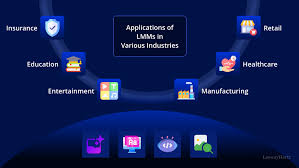There has never been a more pressing need for precise, effective data gathering and interpretation across languages and cultures in a world that is fast becoming more globalized. The language barrier can frequently be a significant hurdle for multinational corporations that work with data in non-Latin-based languages. With an emphasis on places like Japan, where complicated scripts like Kanji, Hiragana, and Katakana can pose major difficulties, developments in artificial intelligence (AI) and optical character recognition (OCR) technology are progressively removing these obstacles.
The Challenge of Japanese Language Complexity
The intricacy of the Japanese writing system is well-known. It uses three different scripts: Katakana, which is mostly used for foreign words and names; Hiragana, which is a phonetic alphabet for local Japanese words; and Kanji, which is made up of thousands of characters taken from Chinese. Text recognition is particularly difficult for conventional machine learning models because of the interaction of these three writing systems.
Multiple character sets and complex reading and writing standards are present in Japanese literature, in contrast to languages that employ the Latin alphabet, where word segmentation and text classification are more straightforward. For businesses that depend on OCR technology to transform handwritten or printed text into machine-readable formats, this poses a special difficulty.
Understanding and deciphering these complex codes is crucial for international businesses looking to engage with Japanese data. In this case, AI and Japanese OCR technologies are helpful.
The Role of AI and OCR in Breaking Language Barriers
AI-driven OCR technology is revolutionizing the way data is collected, interpreted, and utilized in languages like Japanese. Traditional OCR solutions struggled with text complexity, especially with Japanese Kanji, which features intricate characters. However, with the help of AI, OCR can now recognize and accurately process these characters, taking context into account to improve accuracy.
OCR systems are now able to learn from enormous volumes of Japanese text data thanks to machine learning algorithms, especially deep learning. Even in handwritten papers or photographs with different typefaces, these AI models can differentiate between characters by analyzing patterns and linguistic structures. Due to this advancement, OCR technology is now much more dependable, enabling businesses to accurately extract valuable information from Japanese documents, including contracts, legal documents, and technical manuals.
Incorporating AI into Japanese OCR systems also allows for better understanding of the context and meaning behind the text. For instance, AI-powered OCR can interpret ambiguous Kanji characters based on their context in a sentence, making it more flexible and adaptive in real-world applications.
AI Data Collection Company: Transforming International Business
Working with Japanese data offers a distinct set of benefits as well as obstacles for multinational corporations. Businesses may now more quickly extract information from Japanese text, automate procedures, and increase overall productivity with the use of AI-powered Japanese OCR. Businesses can work more effectively in Japan’s complicated language context by using AI-driven OCR for tasks including translating legal papers, evaluating market research reports, and digesting consumer comments.
One of the most significant advantages of this technology is that it allows companies to bridge the gap between different languages and cultures. AI models can help businesses process and interpret Japanese text without needing to rely on human translators for every document. This can significantly reduce the costs and time involved in processing Japanese-language materials and open up new possibilities for companies to work with Japanese data at scale.
For instance, an AI data-collecting business that specializes in OCR solutions can help multinational corporations by delivering effective and scalable document management services. Among these services is the extraction of structured data from unstructured sources, like Japanese financial reports, product catalogs, and scanned invoices. This feature gives multinational corporations new ways to use data from Japanese markets to inform their decisions without running the risk of misunderstandings or losing valuable insights because of language difficulties.
Improving Data Accessibility for Japanese Businesses
The benefits of AI-driven Japanese OCR extend beyond international companies to include Japanese businesses themselves. Many organizations in Japan are looking to digitize their paper-based records and improve accessibility to historical documents. By integrating AI and OCR, they can automate data entry, streamline workflows, and preserve important business records for future use. This is especially valuable in industries such as finance, healthcare, and legal services, where large volumes of data need to be stored, managed, and processed securely.
An AI data collection company that specializes in OCR solutions, for instance, can help multinational corporations by providing scalable and effective document management services. Extracting structured data from unstructured sources, like scanned bills, product catalogs, or financial reports in Japanese, is one of these services. With the use of this capability, multinational corporations may now use data from Japanese markets to guide their decisions without worrying about misunderstandings or lost insights brought on by language limitations.
Looking Ahead: The Future of AI and OCR in Cross-Cultural Data Collection
The impact of AI and OCR technologies on the collecting of cross-cultural data will only increase as they develop further. Businesses will be able to manage even more difficult jobs, such picture recognition, handwritten text interpretation, and simultaneous multilingual data analysis, thanks to the integration of machine learning, deep learning, and OCR.
Unquestionably, AI and OCR have a bright future ahead of them. As these technologies advance, they will be crucial in closing language gaps, especially in areas like Japan with diverse linguistic landscapes. Businesses can now fully utilize Japanese data thanks to artificial intelligence (AI), obtaining insights that were previously unattainable or challenging to obtain because of language barriers.
Conclusion
AI and OCR are playing a pivotal role in transforming the way businesses interact with Japanese data. By enabling accurate interpretation of Japanese text and bridging language barriers, these technologies are helping companies unlock new opportunities in global markets. As AI-powered OCR continues to evolve, it will be essential for international companies to embrace these innovations to stay competitive and make the most of data-driven insights in a rapidly changing world. Whether it’s a global organization expanding its reach into Japan or a Japanese company aiming to digitize its records, the future of machine learning and OCR holds immense potential for seamless, efficient, and cross-cultural data collection.





